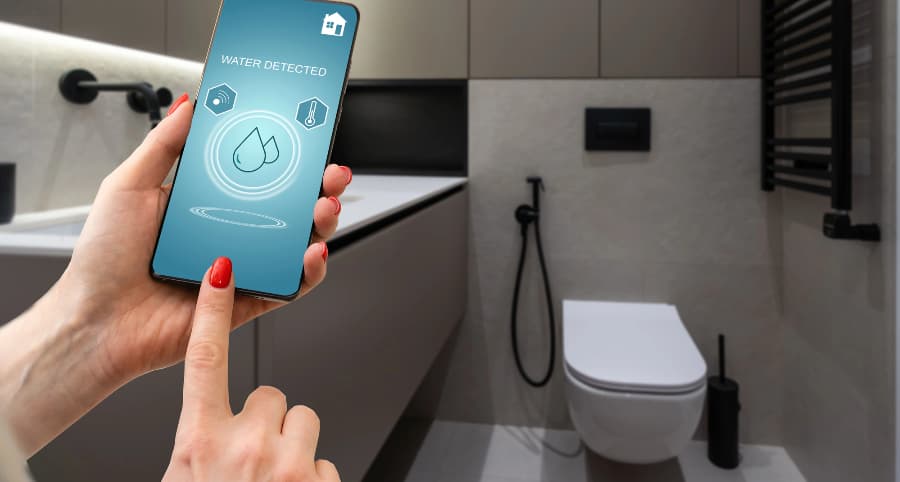How does a water sensor work and why connect one to your Madison smart home?

One small leak in your home can result in major issues and thousands of dollars in damage. You must protect against this danger; thankfully, there’s a straightforward way to accomplish this. A water sensor is an effective, simple, and economical solution. Explore how they work and why you might incorporate water sensors into your Madison smart home.
How water sensors shield Madison properties
Water enters homes in various ways, whether from a plumbing failure, weather-related event, appliance snafu, or just human error. No matter how it takes place, you need to know at once, and this is why water sensors are important. But how do they really work?
Many water sensors are conductive and work with a pair of electrodes. When water reaches the electrodes, an electrical link is established, setting off your alarm. You’ll also come across capacitive sensors that emit an electrical field. When water reaches the conductive areas of these devices, the field is disrupted, and your alarm triggers. Optical sensors employing infrared LED light are another choice.
Get more from your water sensor
Some specialized water sensors offer even more protection as they feature integrated temperature sensors. This is an outstanding feature in preventing frozen pipes. If there’s a drastic drop in temperature, you’ll be notified right away. Taking action before pipes rupture will shield you from water damage and costly repairs.
Why integrate water sensors into your Madison smart home?
When water issues happen, you have to be alerted at once. You can achieve this objective by integrating water sensors into your smart home. Whether you’re home to hear the alarm or away, you’ll receive an immediate alert on your mobile device. As an additional backup, your round-the-clock monitoring specialists will be alerted. Every moment is critical in a water emergency to control the damage and disturbance to your household.
Where should you put water sensors?
Any spot at risk of an influx of water is an ideal place for water sensors. Put them in these spots:
- Bathrooms: Attach behind toilets or next to tubs.
- Basements: Water frequently infiltrates lower floors via cracked walls or as a result of excess rain or malfunctioning sump pumps.
- Around water heaters or appliances: Any water-connected appliance might leak over time.
- Under sinks: Water sensors are ideal for discovering leaky pipes in place you can’t see.
- Attics: Catch roof leaks early and prevent costly damage.
Get water sensors with your Vivint smart home
Give your residence the comprehensive protection it requires with advanced tools from Vivint. Our water sensors in Madison integrate with your Vivint cell phone app to provide automatic notifications whenever your alarm activates. You also get built-in temperature sensors to avert pipe freezing. Explore the smart home tools available in Madison by reaching out to (608) 470-6808 today.
